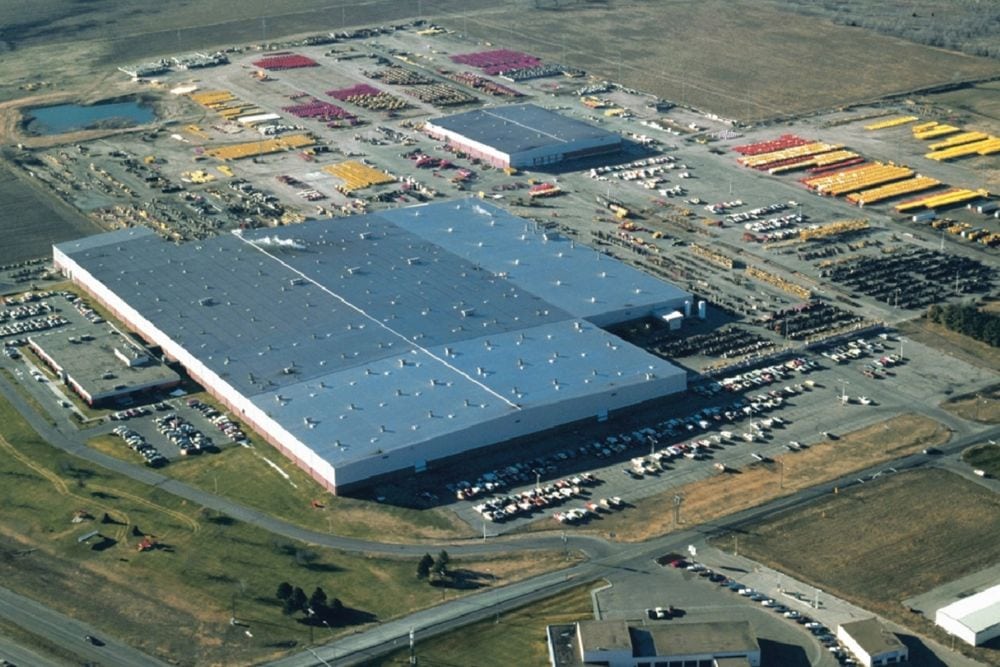In late July, I flew to Nebraska to get an idea of what the ag industry looks like in that state.
Before I even left my hotel in Omaha, I had my first clue. The Omaha World-Herald ran a front-page story on the $12 billion ag aid package with a rhyming headline. “Farmers: Thanks for the aid, but we want trade.” The story included quotes from various farm leaders reinforcing that point.
After checking out of my hotel, I picked up a rental car and hit the I-80. I was bound for Grand Island, home of a Case IH combine factory.
Read Also

Managing through market or individual stock declines
Even the best of public-traded companies can periodically experience significant drawdowns, and a successful investor should be prepared to react — or not react — accordingly, Herman VanGenderen writes.
As I travelled west, the landscape shifted from rolling, treed hills, to flat fields. Most crops were irrigated. Sometimes the corners of the pivot were seeded to sorghum (which is water-efficient) or other crops. Sometimes there was a field of soybeans or a herd of beef cattle. Mostly, though, I saw corn. But that surface impression wasn’t the whole story. Later I spoke to two farmers who told me how they’re doing everything from cover crops to fall grazing cattle on their land (more on that in the future).
On the smaller highways with no shoulders, driving past that tall corn was almost like driving through a forest. Do deer pop out of those fields, I wondered? I did see a few on my last day. One afternoon I drove to the Kenesaw cemetery, where some of my husband’s ancestors were buried.
I spent a good hour or more tracking down my in-laws’ tombstones. My husband’s great great grandparents died in 1921 and 1922 of influenza. So did one of their adult sons, who had survived World War One and the earlier flu pandemic. There were also a number of children and young adults buried in that graveyard.
You’ll find the same trend in old western Canadian cemeteries. It’s a grim reminder of how hard life was 100 years ago, and how medical advancements have changed our lives.
Our society has made big gains in other areas, too. That was clear during the Grand Island Case IH plant tour. About a quarter of the factory-floor employees these days are women. The painters have much better, safer working conditions. And the plant is increasingly efficient in how it uses resources.
It’s not just how we manufacture combines and how we fight disease that’s changing our society. We are in the middle of a communications revolution. Decades ago Canadian communications theorist Marshall McLuhan wrote about the shift from a print-based society to an electronic one, and how that would change us. It’s impossible to summarize McLuhan’s writing in a couple of paragraphs, but some features of this electronic age include:
- Rapid change.
- Lack of attention span.
- In politics, image matters more than policy.
- The world becomes a giant computer or electronic brain. We move towards a collective rather than individual identity, and we internalize Big Brother.
McLuhan also thought that as our world became more interconnected, fear would become more prevalent, unless we could wrap our heads around this shift to the collective.
The thing about change is that it embodies both risk and reward. Humans both crave and fear it, and have done so long before McLuhan. So in a way it’s hardly surprising that people get nervous about, for example, changes in the way their food is produced. It doesn’t help that someone on Facebook is always willing to feed them a fear sandwich. (I’m looking at you, plastic lettuce lady).
As for me, I’ve gotten to the point that I try to avoid eating anything that smells like terror or outrage. We all need to start cutting that junk from our online diets just as we should cut excess sugar. We need to be very wary of political leaders and social media personalities peddling fear and loathing. In the electronic age, logic and the ability to pay attention will help us push through the surface impression these people present.
















